Contents
- 1 The Importance of Knowing Different Beef Cuts
- 2 Categories of Beef Cuts
- 3 Detailed Overview of Beef Cuts
- 4 The Chuck Cut
- 5 The Rib Cut
- 6 Short Plate & Flank
- 7 Brisket
- 8 The Loin Cut
- 9 Sirloin
- 10 The Round Cut
- 11 Shank
- 12 Short Loin
- 13 Hanger
- 14 Flat Iron
- 15 Skirt
- 16 Which is the Leanest Cut of Beef?
- 17 How to Choose the Right Cut for Your Recipe
- 18 How Do Different Cuts Affect Taste and Texture?
- 19 References and Sources
- 20 Frequently Asked Questions
- 21 Conclusion
Are you tired of being confused about the different beef cuts when shopping or ordering at a restaurant? Understanding the various beef cuts is crucial to ensure that you get the best taste and texture for your recipe. In this blog, we will cover everything from the importance of knowing different beef cuts to a detailed overview of all the categories of beef cuts. We will also dive deep into each cut like Chuck, Rib, Short Plate & Flank, Brisket, Short Loin, Hanger, Flat Iron, Skirt and which one is the leanest.
Lastly, we will answer all your questions about how to choose the right cut for your recipe and how different cuts affect taste and texture. So read on to become a pro in choosing the perfect cut of meat for every occasion!
The Importance of Knowing Different Beef Cuts
Understanding the various cuts of beef is essential for choosing the perfect cut of meat for your recipe and budget. Each cut has its own level of tenderness and flavor, which can greatly impact the final dish. Moreover, this knowledge enables effective communication with your butcher or meat supplier. Appreciating and enjoying different types of beef dishes becomes easier when you understand the different cuts. Finally, being aware of beef cuts allows you to make informed decisions about sustainable and ethical meat consumption.
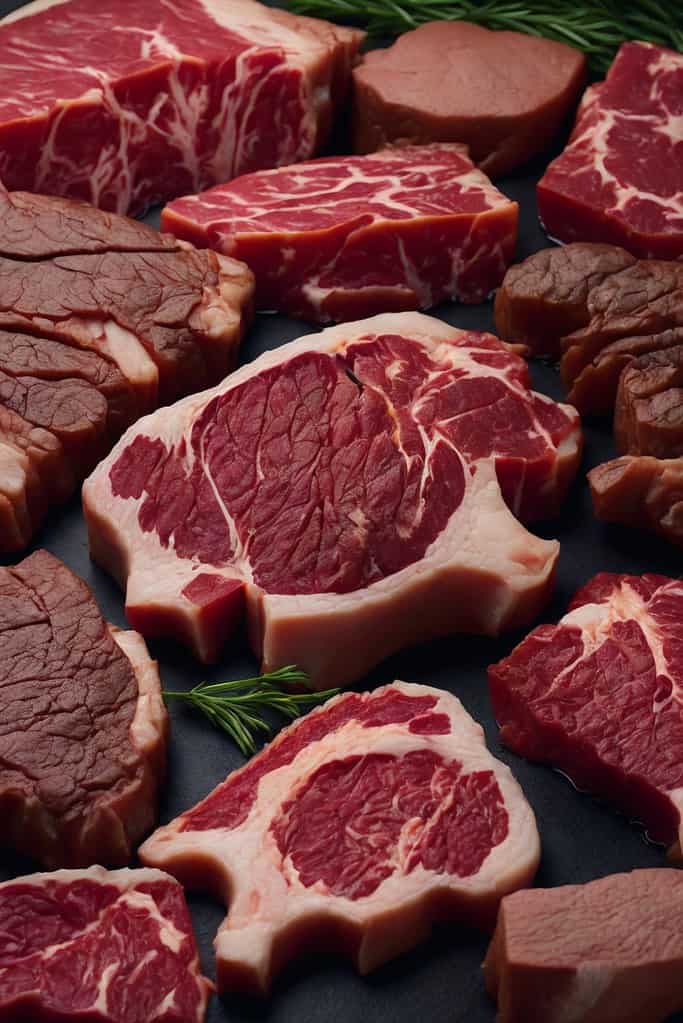
Categories of Beef Cuts
Primal cuts, secondary cuts, specialty cuts, ground beef, and offal are the categories of beef cuts. Primal cuts are larger cuts that come from specific parts of the animal, such as the loin or rib. Secondary cuts are smaller pieces taken from the primal cuts, like sirloin or flank steak. Specialty cuts are less common and may be more expensive or require special preparation, such as filet mignon or brisket. Ground beef is used for dishes like burgers or meatballs. Offal refers to organs and other edible parts of the animal, like liver or tripe, used in certain recipes. Retail cuts are typically sold in grocery stores and include popular cuts like sirloin, ribeye, and tenderloin.
Understanding Primal Cuts
Primal cuts are the main categories of beef cuts, categorized based on the animal’s anatomy. The chuck, rib, loin, and round are the four primal cuts. The chuck comes from the shoulder area and is commonly used for stews or ground beef. Rib cuts, sourced from the ribcage, include popular cuts like ribeye and prime rib. Loin cuts are from the back of the animal and feature the most tender cuts such as filet mignon and sirloin. Another popular cut is beef brisket, which comes from the breast or lower chest of the animal and is often used for slow-cooking methods like smoking or braising.
Subprimal Cuts Explained
Subprimal cuts, which are smaller portions of larger meat cuts, can be further divided into individual servings. Common subprimal cuts include the chuck, rib, loin, sirloin, and round. The chuck subprimal cut is perfect for slow-cooked stews and pot roasts. On the other hand, the rib subprimal cut is known for its juicy and flavorful steaks like ribeye and prime rib. Finally, the loin subprimal cut offers some of the most tender and expensive cuts such as filet mignon and T-bone steak.
Detailed Overview of Beef Cuts
When it comes to understanding the different cuts of beef, knowledge of the cow’s anatomy is key. Popular cuts like ribeye, tenderloin, and sirloin each have their own unique characteristics that make them stand out. However, there are also lesser-known cuts like hanger steak and flank steak that, when cooked properly, can be incredibly flavorful. One such cut is the beef plate, which is known for its rich, beefy flavor and tender texture. It’s important to choose the right cut for your recipe and cooking method, taking into consideration factors like tenderness and fat content. Quality grading and sourcing play a crucial role in ensuring the best flavor and texture in your beef cuts.
The Chuck Cut
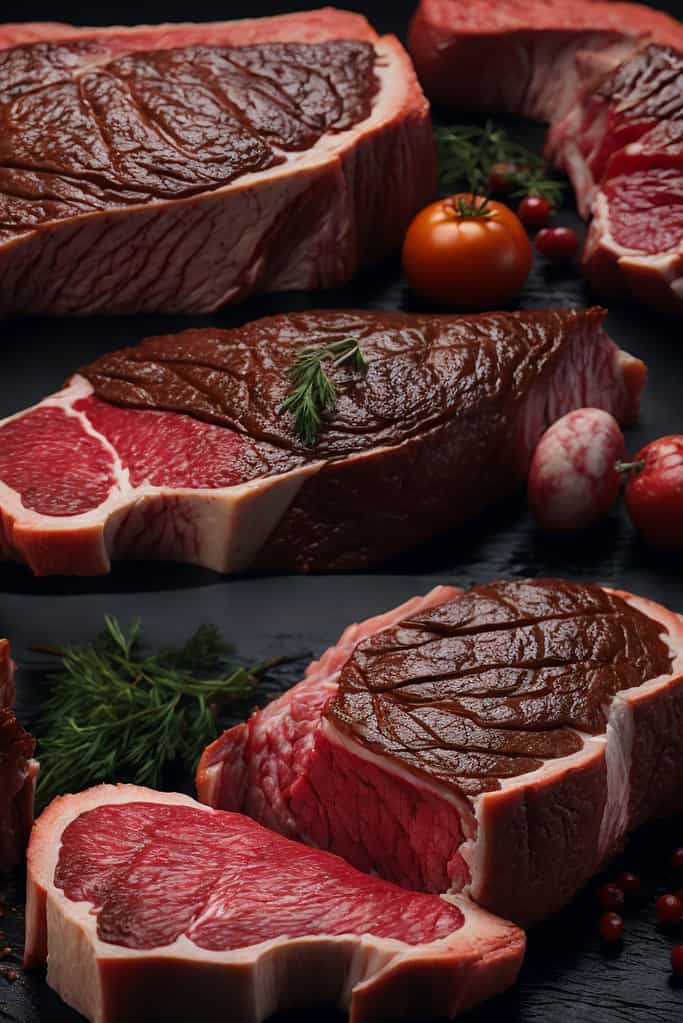
The Chuck Cut originates from the shoulder area of the cow and boasts flavorful, well-marbled meat. This cut can be divided into various sub-cuts like chuck roast, chuck steak, and mock tender. Slow-cooking methods such as braising, stewing, or roasting are ideal for preparing chuck cuts to break down tough connective tissue. Due to its delicious flavor profile, this cut is a popular choice for pot roasts, beef stews, and chili. When purchasing chuck cuts, look for good marbling while avoiding excess fat or gristle. Another popular sub-cut of beef is the beef flank, which is lean and flavorful and can be used in a variety of dishes.
Blade Roast
Blade roast, a cut from the chuck section of the cow, is known for its rich flavor. This versatile cut can be cooked using various methods like roasting, braising, or slow cooking on the grill. To ensure tenderness, it’s important to remove the tough connective tissue before cooking blade roast. Economical and great for feeding a crowd or meal prep, blade roast is commonly used in stews, pot roasts, and other hearty dishes. With its delicious taste and versatility, blade roast is a popular choice for beef lovers.
Boneless Chuck Roast
The boneless chuck roast is a versatile and flavorful cut of beef that comes from the shoulder region. It can be roasted, braised, or slow-cooked in stews to perfection. Thanks to its marbled fat content, the chuck roast remains tender and juicy during cooking, making it an excellent choice for feeding large groups. When selecting a chuck roast, look for one with consistent thickness and well-marbled fat for even cooking. The boneless chuck roast is not only affordable but also a crowd-pleaser due to its delicious flavor and tenderness.
Chuck Eye Roast
Chuck eye roast, also known as the “poor man’s ribeye,” is a flavorful cut that comes from the shoulder region of the cow. It shares a similar appearance and taste to a ribeye steak but at a more affordable price. This versatile cut can be braised, roasted, or grilled to perfection. For the best results, it is recommended to cook chuck eye roast low and slow to tenderize the meat and enhance its natural flavor. With chuck eye roast, you can enjoy the taste and texture of a premium cut without breaking the bank.
Shoulder Roast
The chuck cut, which is a popular choice for pot roasts and stews, also yields a tender shoulder roast when slow-cooked. This cut contains marbling, adding both flavor and juiciness to the meat. Along with the shoulder roast, other cuts from the chuck include the chuck eye, chuck tender, and flat iron steak. When purchasing chuck, look for bright red meat with white fat streaks to ensure optimal quality. Slow-cooking a shoulder roast from this cut will result in maximum tenderness.
Shoulder Steak
Shoulder steak, a versatile and budget-friendly option, is derived from the chuck cut. This tough yet flavorful cut from the shoulder of the cow can be prepared in various ways to enhance its tenderness. Grilling, broiling, or pan-frying the shoulder steak to medium-rare ensures optimal tenderness. Alternatively, slow cooking methods like braising or stewing can bring out the richness of flavor in the chuck cut. Thanks to its higher connective tissue content, shoulder steak is perfect for slow cooking methods that break down the tissue and yield tender meat.
Under Blade Pot Roast
Under Blade Pot Roast, derived from the Chuck, is an affordable and delicious cut of beef. It’s a versatile option that can be slow-cooked, braised, or roasted to enhance its rich flavor. Ideal for hearty stews, casseroles, and pot roasts, it offers great taste without compromising on quality. While cooking, it’s essential to properly trim the fat and silver skin for optimal tenderness. The Under Blade Pot Roast proves that budget-friendly cuts can still deliver exceptional taste and tender texture.
The Rib Cut
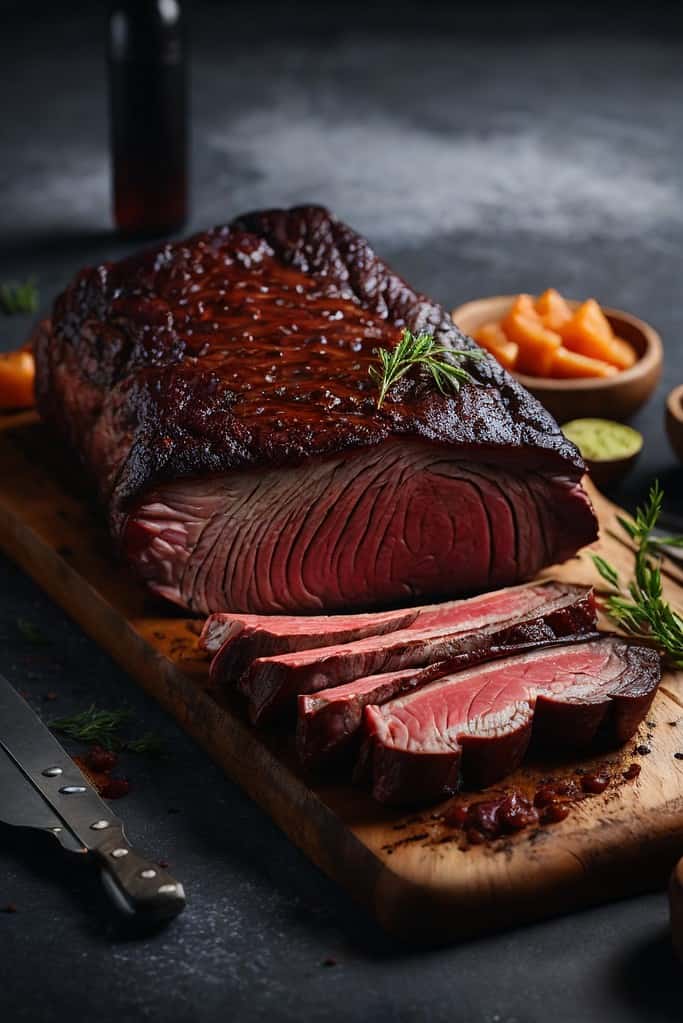
Located between the chuck and loin sections of the cow, the rib cut is known for its tenderness and rich flavor. Whether bone-in or boneless, rib cuts are popular for their extra flavor and moisture retention while cooking. Ribeye steaks, prime rib roasts, beef ribs, and cowboy steaks are common uses for this versatile cut. When selecting a rib cut, pay attention to marbling, as it adds both flavor and tenderness to the meat.
Rib Roast
The rib roast is a sought-after cut that encompasses the rib bones and meat from the upper back of the cow. It can be prepared with or without the bone and is often used as the centerpiece for holiday meals. These roasts are graded based on their tenderness and marbling, with prime rib being the most tender and well-marbled option among expensive cuts of beef. Roasting, grilling, and smoking are all popular cooking methods for rib roasts. With its rich flavor and versatility, the rib roast is a favorite among beef enthusiasts.
Ribeye Steak
Ribeye steak, a popular choice for beef lovers, is known for its tenderness and marbling. This juicy and flavorful cut is derived from the rib section, making it perfect for high-heat cooking methods like grilling or broiling. While you can find bone-in or boneless options, the bone enhances the flavor and moisture of the steak. When selecting a rib cut, look for bright red color and marbling, ensuring the best quality. Ribeye steak is a prime example of a delicious and tender cut that satisfies any carnivorous craving.
Ribeye Roast
The rib cut, known for its marbling that enhances flavor and juiciness, offers the popular ribeye roast, perfect for special occasions. Slow cooking at a low temperature ensures tender and juicy results, while choosing the bone-in option adds extra flavor and serves as a natural roasting rack. Look for bright red meat with even marbling throughout when purchasing, ensuring optimal quality. By utilizing these tips, you can create a succulent and flavorsome ribeye roast that will impress your guests.
Back Ribs
Back ribs, which are cut from the rib section of the cow, are well-known for their meaty flavor. These ribs are a popular choice for grilling and smoking due to their tender texture and marbling. Back ribs can be cooked in various ways, including slow-cooking, braising, or roasting. They can be enjoyed with different types of sauces, from barbecue to teriyaki. When selecting back ribs, it is important to choose cuts with a good amount of meat and fat marbling for optimal flavor.
Short Plate & Flank

The short plate and flank cuts of beef come from the lower portion of the cow’s body. Used for ground beef, stews, and marinated steak dishes like fajitas, these cuts can be tough if not prepared properly. Slow-cooking methods like braising or roasting are recommended to ensure tenderness. When shopping for short plate and flank cuts, look for well-marbled meat with fat for maximum flavor and tenderness. Incorporate these cuts into your recipes, and you’ll enjoy delicious and satisfying meals.
Short Ribs
Short ribs, taken from the lower portion of the chest, are known for their rich flavor and high-fat content. These versatile cuts of beef can be bone-in or boneless, depending on your preference. Whether grilled, stewed, braised, or smoked, short ribs are perfect for slow cooking. They are particularly popular in Asian cuisine, such as Korean BBQ. The meat surrounding the bone adds to the flavor, making short ribs a favorite choice for those looking for a hearty and indulgent meal.
Flank Steak
Flank steak, a lean cut of beef sourced from the abdominal muscles of the cow, is best enjoyed when cooked rare or medium-rare. Its distinct grain adds to its tenderness, which can be further enhanced by marinating it. This versatile cut is commonly used in dishes like fajitas, stir-fries, and salads. To ensure optimal tenderness, it’s crucial to slice flank steak against the grain. Flank steak offers a flavorful and tender option for various culinary creations.
Skirt Steak (Inside Skirt and Outside Skirt)
Skirt steak, a flavorful cut from the diaphragm muscles of the cow, is available in two variations: inside skirt and outside skirt. While inside skirt is thinner and more tender, outside skirt is thicker and more fibrous. To enhance its flavor and tenderness, skirt steak is best marinated before cooking. This versatile cut is commonly used in Mexican dishes like fajitas but can be prepared in various ways. Affordable and full of flavor, skirt steak is a great option for those seeking a delicious and adaptable cut of beef.
Brisket
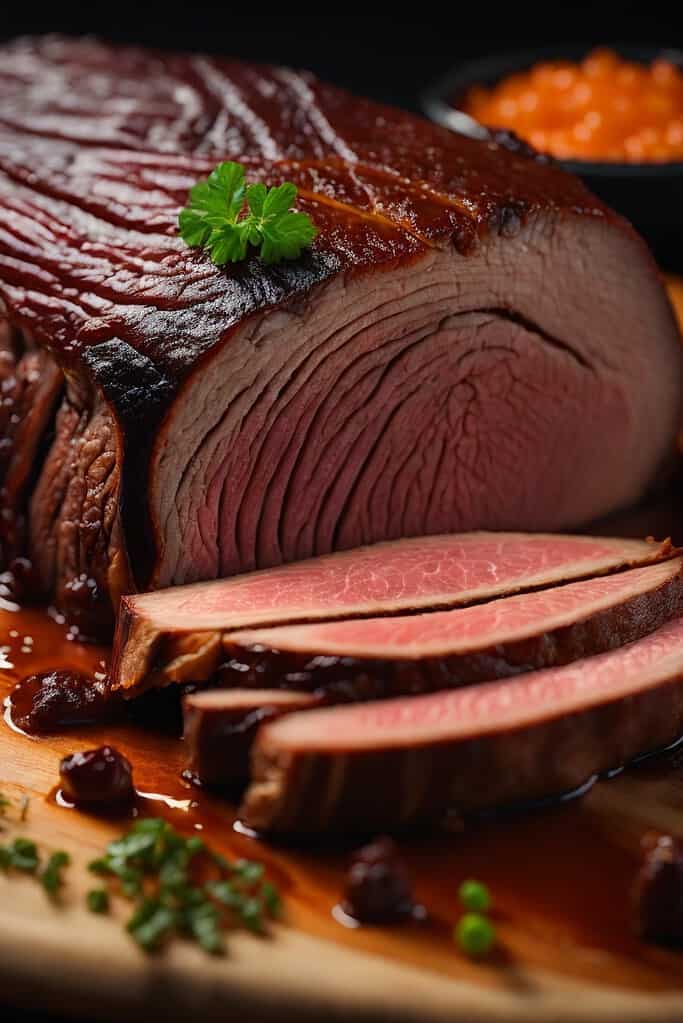
Brisket, a tough cut of beef from the breast of the cow, is renowned for its rich flavor and texture. Popular in BBQ and smoking, it can be divided into two parts: the point and the flat. The point, with more marbling, offers a fattier option, while the leaner flat is easier to slice. To achieve tenderness and juiciness, brisket requires long, slow cooking. This method allows the connective tissue to break down, resulting in a melt-in-your-mouth experience. For those seeking an indulgent and flavorful BBQ experience, brisket is the perfect choice.
Whole Brisket
Whole brisket is a large cut of beef that can weigh up to 20 pounds. It’s composed of two separate muscles: the flat and the point. Typically cooked low and slow, such as in a smoker or slow cooker, whole brisket offers tender and flavorful results. The point muscle, with its marbling, is perfect for making burnt ends or chopped for sandwiches. On the other hand, the leaner flat muscle is best when sliced against the grain for serving.
Flat Cut
The flat cut, which is a leaner and more uniform section of the brisket compared to the point cut, offers a healthier option for those watching their fat intake. This cut is perfect for making pastrami or corned beef, and can be cooked using various methods such as smoking or braising. To ensure the tenderness and juiciness of the meat, it’s important to keep the flat cut moist by basting or wrapping it while cooking. Slicing the flat cut against the grain enhances its tenderness and makes it easier to eat.
Point Cut
The point cut of brisket, also known as the second cut, is a fatty and flavorful option that is perfect for smoking or braising. With its superior fat marbling, the point cut is more tender and juicy compared to the flat cut. Although it requires longer cooking times, the end result is incredibly rewarding. When purchasing point cut brisket, look for even marbling and a bright color to ensure the best quality. Embracing the point cut opens up a world of possibilities for mouthwatering dishes.
The Loin Cut
The loin cut, one of the most popular cuts of beef, encompasses some of the most tender and flavorful meat. It consists of two main sub-cuts: the sirloin and the tenderloin. The sirloin is a larger, less tender cut that is best cooked to medium or medium-rare. On the other hand, the tenderloin, also known as filet mignon, is a smaller and more tender cut that is best enjoyed rare or medium-rare. Both sub-cuts can be prepared through various cooking methods like grilling, broiling, or pan-searing.
T-Bone Steak
T-Bone steak is a popular cut from the loin region, featuring a T-shaped bone that separates two meat portions. One portion is tenderloin, while the other is strip steak. Known for their rich beefy flavor, T-Bone steaks are best for grilling or broiling. It’s important to adjust cooking time according to the size and thickness of the steak. T-Bone steak is a great option for those who enjoy both tender and flavorful meat.
Tenderloin Steak (Filet Mignon)
Tenderloin steak, also known as Filet Mignon, is a highly prized and tender cut of beef. This cut is best prepared using dry heat methods such as grilling or broiling to bring out its natural tenderness. With its mild flavor and leaner profile compared to other cuts, tenderloin steak pairs well with rich sauces or bold seasonings that enhance its taste. When selecting tenderloin steak, look for a bright red color and firm texture to ensure its freshness and quality. So, if you’re looking for a luxurious and tender beef experience, tenderloin steak is the perfect choice.
Strip Steak
Strip steak, also known as New York strip or Kansas City strip, is a lean and tender cut from the loin. It boasts a bold, beefy flavor that is best brought out through high heat cooking methods like grilling or broiling. Strip steak can be served on its own or as part of a steakhouse-style meal. It’s a popular choice among beef lovers for its tenderness and robust taste. Its versatility allows it to be paired with a variety of sides and sauces to enhance its flavor.
Sirloin
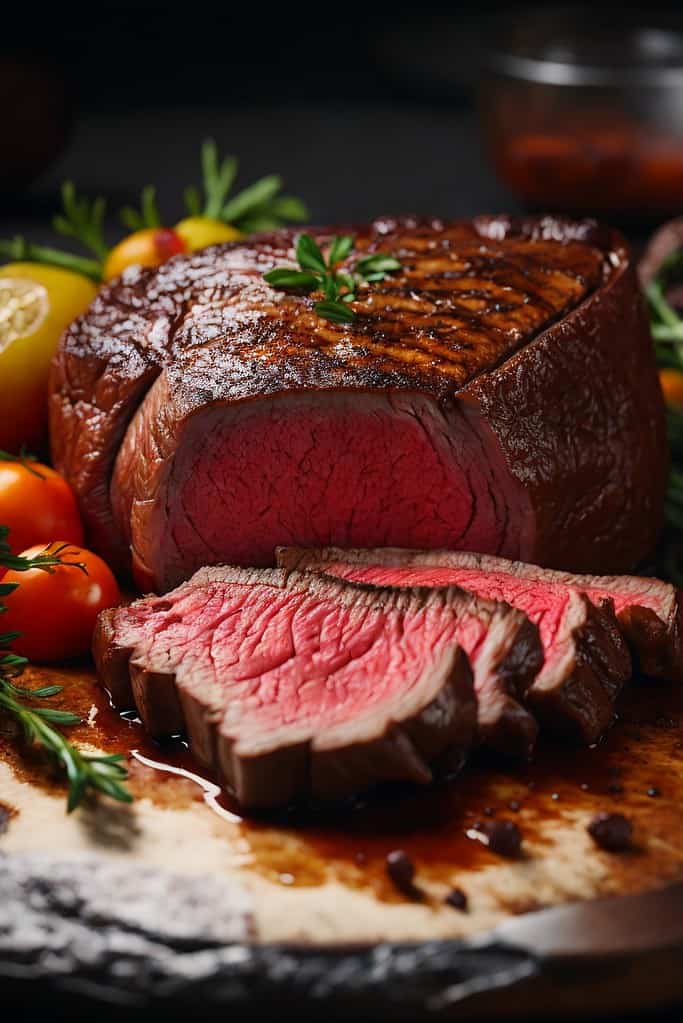
Sirloin is a popular cut of beef that comes from the upper portion of the cow’s back. It’s known for its rich flavor and tenderness, making it a favorite among steak lovers. Sirloin can be grilled, broiled, or pan-fried and is versatile enough to be served with a variety of sides. When shopping for sirloin, look for cuts that have a good amount of marbling for added flavor and tenderness. Some popular types of sirloin include top sirloin, bottom sirloin, and tri-tip.
Top Sirloin
Top sirloin is a versatile and affordable cut that comes from the top of the sirloin primal. With its lean and flavorful characteristics, it can be cooked in various ways like grilling, roasting, or broiling. Letting the meat rest after cooking is important to keep it tender and juicy. To enhance the flavor, top sirloin can be marinated or seasoned with herbs and spices. It’s a great alternative to more expensive cuts like filet mignon and ribeye, offering a delicious option for beef lovers.
Sirloin Steak
Sirloin steak, derived from the lower back of the cow, is a lean and flavorful cut that offers versatility in cooking methods. It can be grilled, broiled, or prepared in various ways. This cut is often divided into two types: top sirloin and bottom sirloin. While top sirloin is more tender with less fat, it’s important to choose cuts with marbling and avoid excessive fat content. With its delicious taste and flexibility in preparation, sirloin steak is a popular choice for meat lovers.
Tri-Tip Steak
Tri-Tip Steak, a triangular-shaped cut from the sirloin, is beloved for its rich flavor and tenderness. It’s perfect for grilling or smoking, and can be seasoned with various spices and marinades. This versatile cut can be thinly sliced for sandwiches or served as a larger roast for special occasions. Look for well-marbled meat with a deep red color when purchasing Tri-Tip Steak. A properly cooked Tri-Tip Steak should be juicy and tender, with a slightly pink center.
Tri-Tip Roast
The Tri-Tip Roast is a flavorful and lean cut of meat that originates from the bottom sirloin. It is highly sought after in California and some regions of the West Coast, although it may be more difficult to find in other areas. This versatile cut can be prepared in various ways, including roasting, grilling, or smoking. To ensure optimal juiciness, it is essential to allow the meat to rest after cooking, allowing the juices to redistribute. Tri-Tip Roast pairs exceptionally well with robust flavors such as garlic, rosemary, and red wine.
The Round Cut
The round cut, sourced from the cow’s rear leg, is known for its leanness compared to other cuts. To ensure tenderness, it is commonly slow-cooked through methods like roasting or braising. The round cut encompasses popular sub-cuts including top round, bottom round, and eye of round. Deli meat often utilizes top round, while pot roasts are commonly made with bottom round. For roast beef, the eye of round is a popular choice, which can also be thinly sliced for sandwiches.
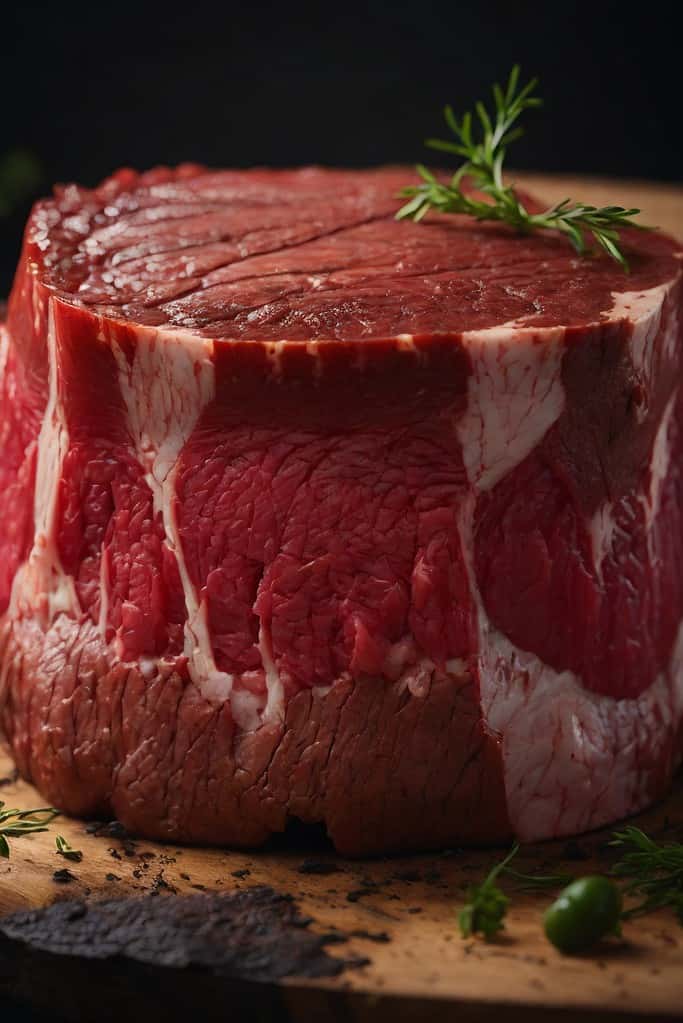
Top Round Steak
Top Round Steak is a versatile and flavorful cut that is sourced from the top of the round primal. Its lean composition makes it ideal for grilling, roasting, or broiling. This cut can be sliced thin for sandwiches or cooked whole for a family meal. For enhanced tenderness and flavor, marinating before cooking is recommended. It can be used in a variety of dishes, ranging from stir fry to stews. When purchasing Top Round Steak, look for a bright red color and avoid cuts with excessive fat or gristle.
Bottom Round Steak
Bottom round steak, a lean cut of beef from the hindquarters, is commonly used in stews, roasts, and slow-cooking recipes due to its toughness. To enhance its tenderness, this budget-friendly cut can be tenderized using marinades or mechanical methods. Maximizing tenderness is crucial, so it’s important to slice this cut against the grain. Despite its affordability, bottom round steak still offers great flavor, making it a popular choice for beef dishes. Whether you’re preparing a hearty stew or a slow-cooked roast, bottom round steak is a versatile option that won’t disappoint.
Eye of Round
Eye of Round is a lean cut of beef that comes from the hindquarters. It’s ideal for roasting, but can also be used for stews or slow-cooking recipes. The Eye of Round is low in fat and cholesterol, making it a healthier option. It has a distinct beefy flavor and can be seasoned with a variety of spices. Proper cooking techniques, such as basting and using a meat thermometer, can ensure a tender and juicy Eye of Round.
Rump Roast
Rump roast, a flavorful and lean cut sourced from the bottom round of the cow, offers versatility in cooking methods. Whether it’s roasting, grilling, or braising, this cut delivers great taste. It’s an economical choice for larger gatherings and pairs perfectly with bold flavors like garlic, rosemary, and red wine. To retain its juiciness and tenderness, it is important to let the meat rest after cooking. Rump roast provides a delicious and budget-friendly option for beef lovers.
Shank
The shank, a tough cut of beef from the lower leg of the cow, is typically sold as a whole or cross-cut, and it can be either bone-in or boneless. Due to its toughness, the shank is best suited for slow-cooking methods such as braising or stewing. It is often used in dishes like osso buco, where the meat is cooked until tender and falls off the bone. When buying shank, look for pieces that are well-marbled with fat, as this will help keep the meat moist during cooking.

Fore Shank
Fore shank, the front leg of the cow, is known for its tough and sinewy texture. This cut is perfect for slow-cooking methods like braising or stewing, allowing the meat to become tender and flavorful. Its proximity to the bone gives the fore shank a rich taste that adds depth to any dish. You can use it in soups, stews, and curries, or even ground it up for burgers and meatballs. Not only is fore shank an affordable option, but it also provides a great way to enjoy delicious and budget-friendly meals.
Hind Shank
Hind shank, a tough and lean cut from the lower leg of the cow, is versatile in its cooking methods. Its connective tissue and rich flavor make it perfect for stews, soups, and braises. Slow cooking techniques like braising or pressure cooking can help break down the connective tissue and tenderize the meat. However, with proper marination, hind shank can also be grilled or roasted. When purchasing hind shank, look for pieces that have a deep red color and minimal fat.
Short Loin
The short loin is located between the rib and sirloin, making it a prime cut of beef. Its high marbling content gives it exceptional tenderness and flavor. Popular cuts from the short loin include the porterhouse, T-bone, and strip steak. The porterhouse is a larger cut that combines both the tenderloin and strip steak, while the T-bone includes a smaller portion of tenderloin. The strip steak, also known as New York strip or Kansas City strip, is a favorite for grilling or broiling.
Strip Steak (New York Strip)
Strip steak, also known as New York strip, is a tender and flavorful cut from the short loin. Its marbling contributes to its delicious taste, with a perfect balance of fat and meat. This versatile cut can be grilled, pan-fried, or broiled to perfection. It’s no wonder that strip steak is a popular choice among steak lovers and can be found in many restaurants and steak houses. When selecting a strip steak, look for deep color and marbling for the best flavor. Whether you’re grilling for a backyard barbecue or cooking a special meal, strip steak is an excellent option.
T-Bone Steak
T-Bone steak is a cut that comes from the short loin section of the cow and features a T-shaped bone. It offers the best of both worlds by combining two different cuts – the tenderloin and the strip steak – in one piece. This makes it an excellent choice for those who enjoy both tenderness and flavor in their meat. The tenderness of the T-Bone steak depends on various factors such as the age of the cow, the thickness of the cut, and the marbling present. It is perfect for grilling or broiling and pairs well with bold flavors like garlic and black pepper.
Porterhouse Steak
Porterhouse steak is a versatile cut that can be grilled, broiled, or pan-seared. It is a popular cut from the short loin, located near the rear of the animal. This steak features a T-shaped bone that separates the tenderloin and the strip steak. Known for its tenderness and rich flavor, the thickness of the Porterhouse steak can affect its cooking time and level of doneness. Whether you prefer a thicker or thinner cut, Porterhouse steak is sure to satisfy your taste buds with its succulent and juicy texture.
Hanger
The hanger steak, also known as the “butcher’s steak,” is a flavorful cut that comes from the muscle supporting the diaphragm. Butchers used to keep this cut for themselves. It has a rich, beefy flavor and is commonly used in dishes like fajitas and steak sandwiches. The hanger steak can be cooked quickly over high heat and should be sliced against the grain for tenderness. While not as well-known as other cuts, it is a versatile and delicious option for beef lovers.
Hanger Steak (aka Butcher’s Steak)
Known as the “butcher’s cut” due to its popularity among butchers, the hanger steak is a flavorful option that comes from the diaphragm area of the cow. With its strong, beefy taste, it offers a more affordable alternative to premium cuts like ribeye or filet mignon. Best served medium-rare, the hanger steak can be grilled, broiled, or pan-fried. Its versatility allows it to be a star ingredient in dishes such as fajitas, stir-fries, or even salads. Embrace the rich flavors of the hanger steak and enjoy a delicious and economical cut of beef.
Flat Iron
The flat iron steak, one of the different cuts of beef, is known for its tenderness and marbling. Discovered in the early 2000s, it has gained popularity in recent years. This versatile cut comes from the shoulder of the cow and is best cooked using high heat methods like grilling or broiling. With its rich flavor and tender texture, the flat iron is often compared to the more expensive filet mignon. From tacos to stir-fries, this cut adds deliciousness to a variety of dishes.
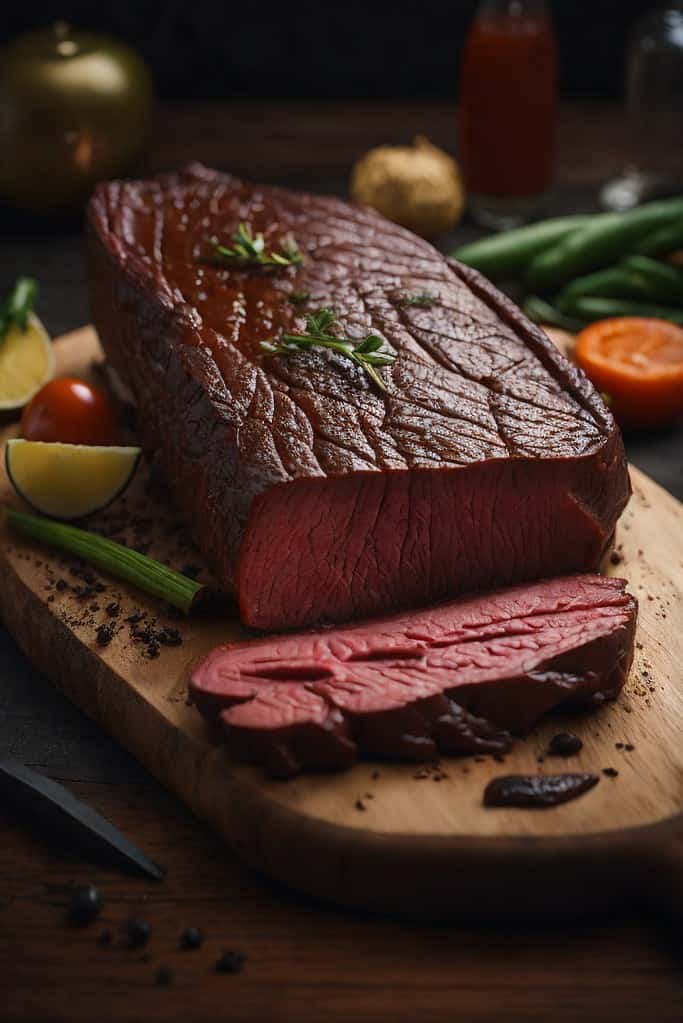
Flat Iron Steak
Flat Iron steak, a popular cut originating from the shoulder region of the cow, is highly regarded for its tender and flavorful qualities. It offers an affordable alternative to pricier cuts like filet mignon or ribeye. By applying proper cooking techniques, such as grilling, pan-frying, or broiling, the flavor and tenderness of the flat iron steak can be enhanced. Its versatility allows it to be incorporated into various dishes, making it a favorite among meat lovers. This cut has gained significant popularity in recent years due to its remarkable taste and texture.
Skirt
Skirt steak, originating from the plate or diaphragm area of the cow, is a long and flat cut known for its intense beef flavor and chewy texture. It is commonly used in fajitas, stir-fry, or marinated and grilled dishes. To ensure maximum tenderness, it’s crucial to slice against the grain due to its coarse texture. Skirt steak can be found in two varieties – inside skirt and outside skirt, with the latter being more tender and flavorful. Embodying the flavors and textures associated with different cuts of beef, skirt steak offers a unique dining experience.
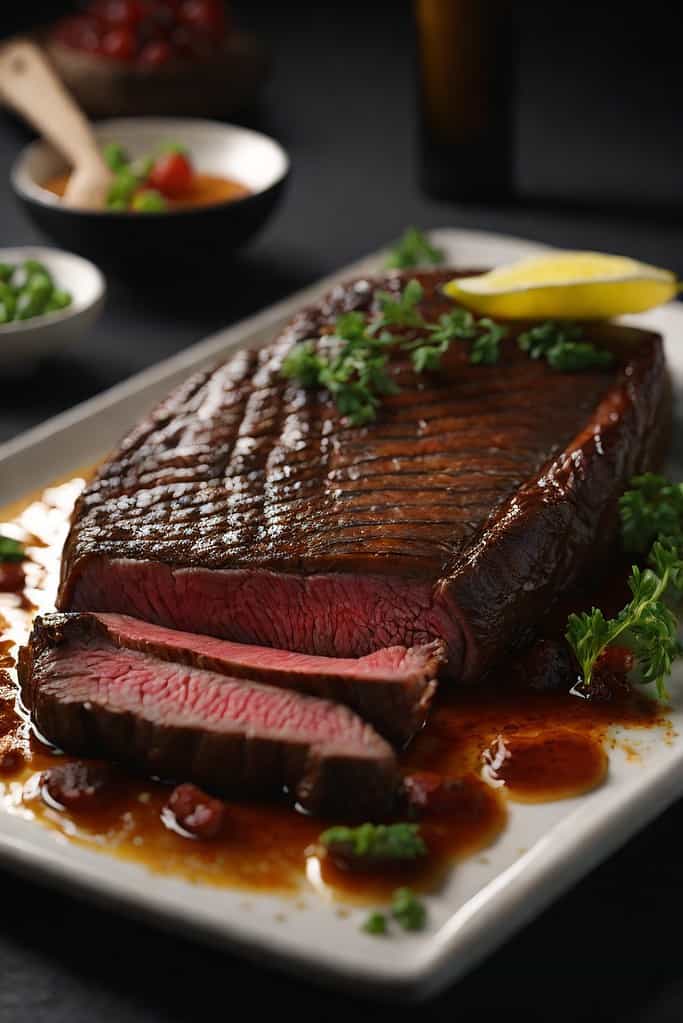
Outside Skirt Steak
Outside skirt steak, which comes from the diaphragm muscle, is a long and flat cut known for its strong, beefy flavor. This cut is best cooked over high heat, making it perfect for fajitas or as a substitute for flank steak. To maximize tenderness, it’s important to slice against the grain. Additionally, marinating the outside skirt steak can add an extra layer of flavor. With its robust taste and tender texture, outside skirt steak is a delicious choice for any grilling or stir-fry recipe.
Inside Skirt Steak
Inside skirt steak is a long and thin cut that comes from the plate section of the cow. It is known for its intense beefy flavor and tender texture when cooked properly. This versatile cut is best suited for grilling or broiling, but it can also be used in stir-fry dishes or fajitas. To enhance its flavor, trim away any excess fat and marinate the inside skirt steak before cooking. With its bold, meaty flavors, this cut is an excellent choice for those who enjoy a robust beef experience.
Which is the Leanest Cut of Beef?
The leanest cuts of beef, such as tenderloin or sirloin, are known for their lower fat content and minimal marbling. Other lean options include flank steak, eye of round, and top round. Opting for these cuts can be a healthier choice, especially for those monitoring their fat intake.
How to Choose the Right Cut for Your Recipe
When selecting a cut of beef for your recipe, it’s important to consider factors such as tenderness, flavor, and fat content. Keep in mind that different cuts have different characteristics and are better suited for specific cooking methods. For slow-cooking or braising, cuts like chuck or brisket work well, while steaks are best made from cuts such as tenderloin, T-bone, or sirloin. Don’t hesitate to seek advice from your butcher, who can recommend the most suitable cut based on your recipe and budget. Remember, higher quality cuts may be pricier but can result in a more delicious end product.
How Do Different Cuts Affect Taste and Texture?
When it comes to beef, the different cuts can greatly influence the taste and texture of the meat. Cuts with more fat marbling tend to be juicier and more flavorful, while leaner cuts offer a cleaner taste. Additionally, cooking methods play a role in how the cuts affect taste and texture.
References and Sources
- https://www.thermoworks.com/thermapen-one/
- https://www.mychicagosteak.com/steak-university/porterhouses-vs-t-bones-difference
- https://www.fsis.usda.gov/wps/portal/fsis/topics/regulatory-compliance/labeling/labeling-policies/basics-of-labeling/basics-labeling
- https://www.instagram.com/thebeststopsupermarketinc/
- https://www.instagram.com/clovermeadowsbeef/
- https://www.youtube.com/channel/UC_ijvn6gkbb-JllUtl4_Fvg
Frequently Asked Questions
What is the difference between a ribeye and a sirloin?
The difference between a ribeye and a sirloin lies in their origin and characteristics. While the ribeye comes from the rib section and is known for its marbling and tenderness, the sirloin comes from the lower back and offers a leaner cut with a stronger beefy flavor. Grilling or pan-searing suits ribeye, while sirloin is commonly used in roasts or stews. Ultimately, it depends on personal preference.
What are some cooking methods that work best for different beef cuts?
For tender cuts like filet mignon or ribeye, grilling or pan-searing is ideal. Tougher cuts like chuck or brisket are best cooked low and slow, such as in a slow cooker or braising pot. Flank steak is great for marinating and then grilling or broiling quickly at high heat. Ground beef can be used in a variety of ways, including burgers, meatballs, chili, and spaghetti sauce.
How can I tell if a certain cut of beef is high-quality?
To determine if a cut of beef is high-quality, look for marbling, indicating tenderness and flavor. Opt for bright red meat that is firm to the touch. USDA grades like “prime” or “choice” indicate higher quality. Consider supporting local butchers or farmers prioritizing animal welfare and sustainability.
Are there any specific dishes or recipes that work best with certain beef cuts?
Certain beef cuts lend themselves well to specific dishes and recipes. For instance, tenderloin or ribeye cuts are perfect for grilled or pan-seared steaks. On the other hand, cuts like chuck or brisket excel in slow-cooked stews and casseroles. The choice of cut depends on the recipe and cooking method you plan to use.
How should I store and prepare different beef cuts to ensure optimal flavor and tenderness?
To ensure optimal flavor and tenderness, store beef cuts in the refrigerator at or below 40°F and use within 3-5 days. For enhanced taste and tenderness, consider marinating tougher cuts before cooking. Use high-heat methods like grilling for leaner cuts, and slow-cooking methods like braising for tougher cuts. Always use a meat thermometer to ensure proper cooking temperature.
Are there any nutritional differences between the different types of beef cuts?
Yes, there are variations in the nutritional content among different beef cuts. Lean cuts like sirloin and round have lower fat and calorie content compared to fattier cuts like ribeye or T-bone. The marbling in fattier cuts adds flavor but also increases saturated fat. Choosing a leaner cut depends on your dietary needs and preferences.
Conclusion
In conclusion, understanding different beef cuts is crucial for making informed decisions when it comes to cooking and enjoying beef. Each cut of beef has its own unique characteristics, including taste, texture, and tenderness. Whether you’re looking for a tender steak, a flavorful roast, or a lean option, knowing the different cuts will help you choose the right one for your recipe. From the rich marbling of a rib cut to the tenderness of a short loin, each cut offers a distinct dining experience. So the next time you’re at the butcher shop or planning a meal, take the time to explore and experiment with different beef cuts to enhance your culinary skills and elevate your dining experience.



